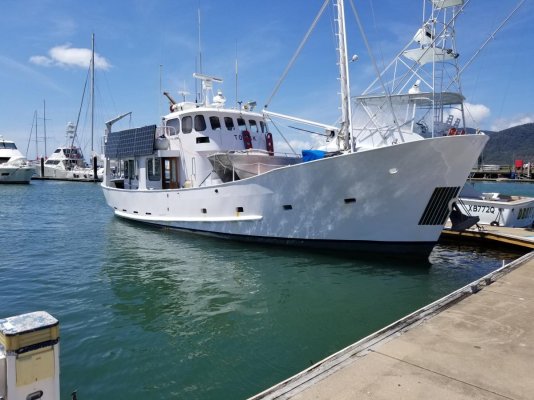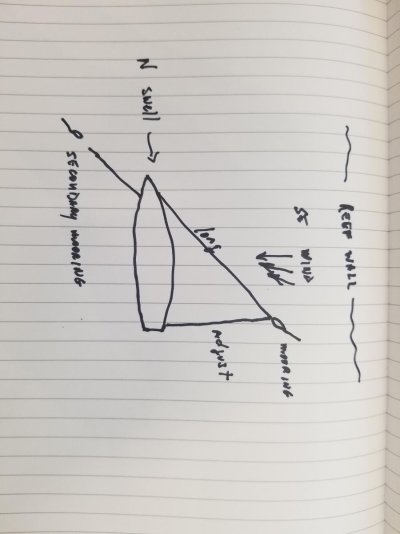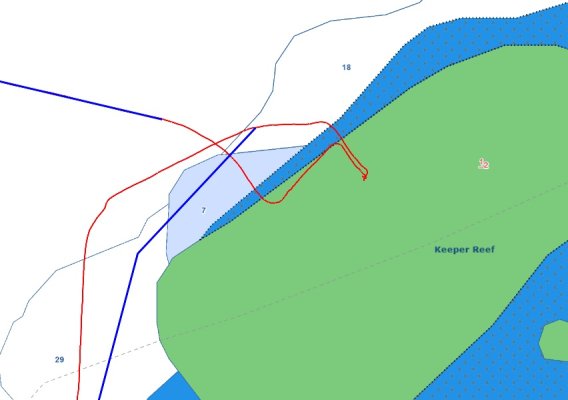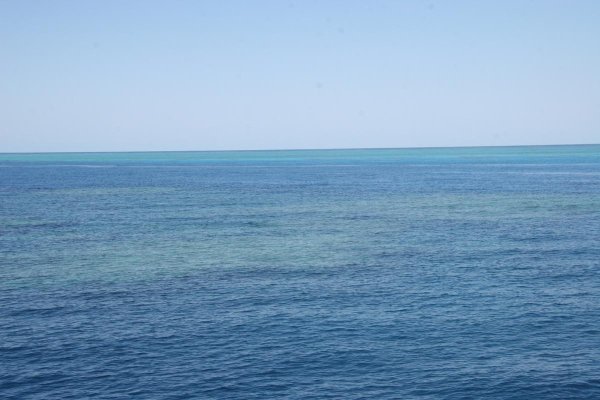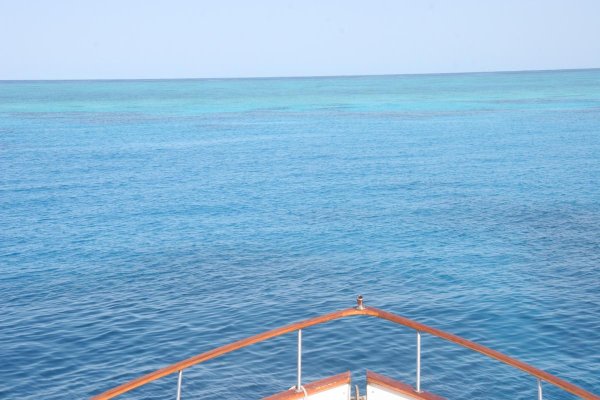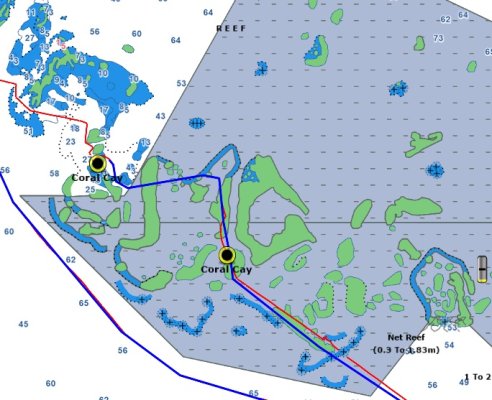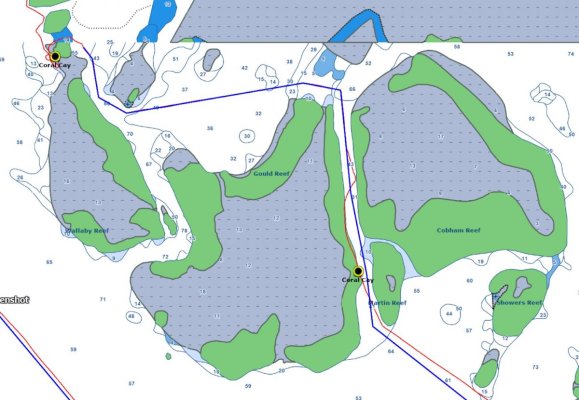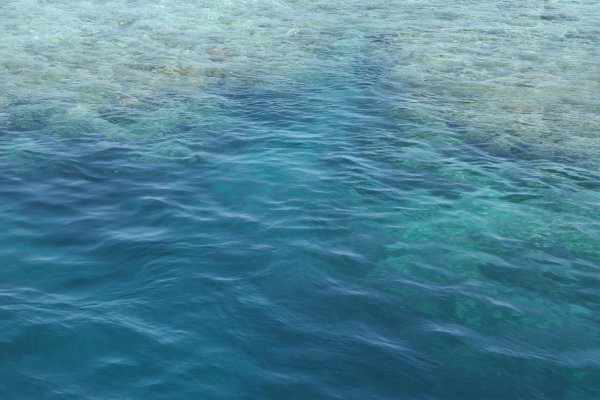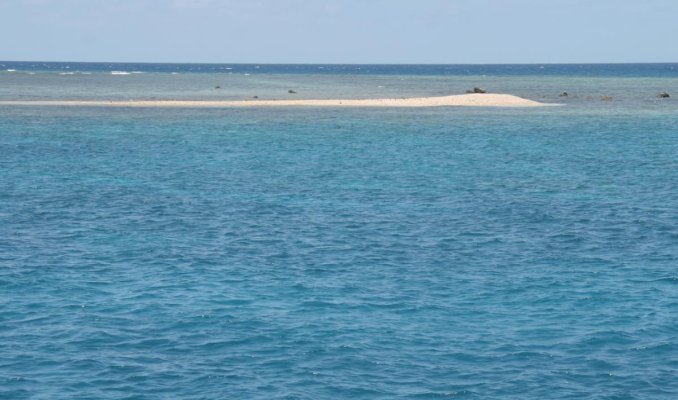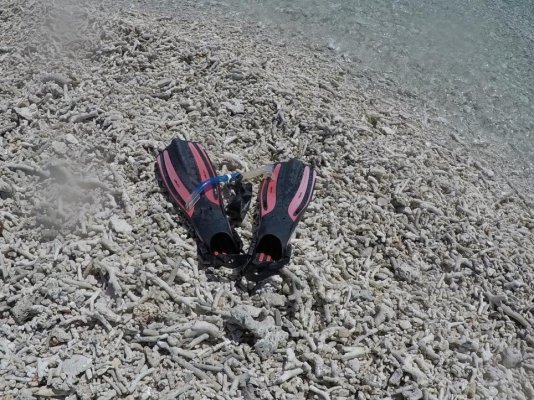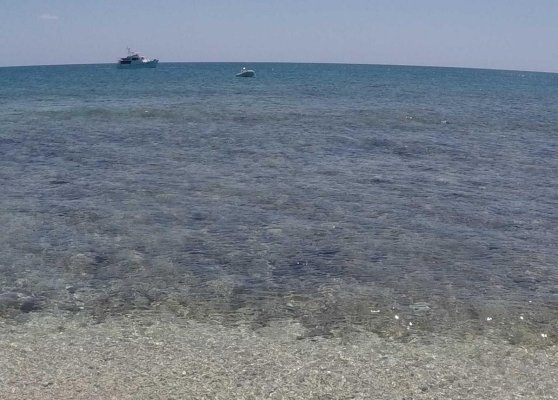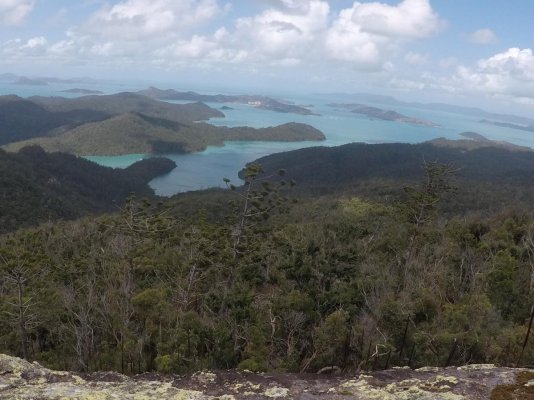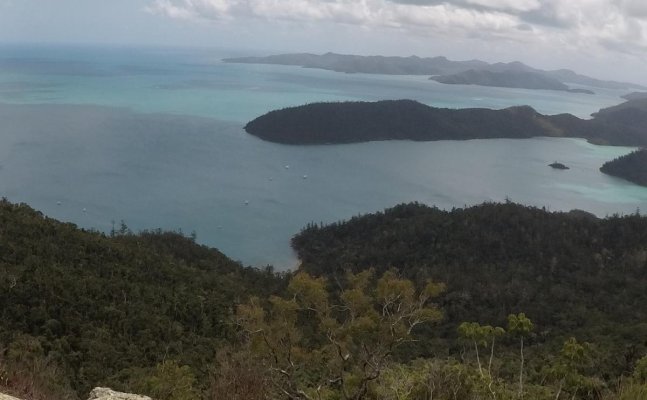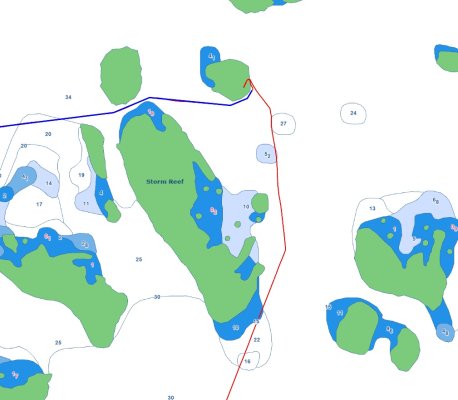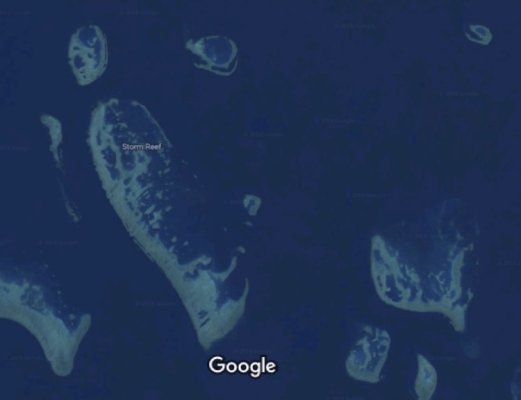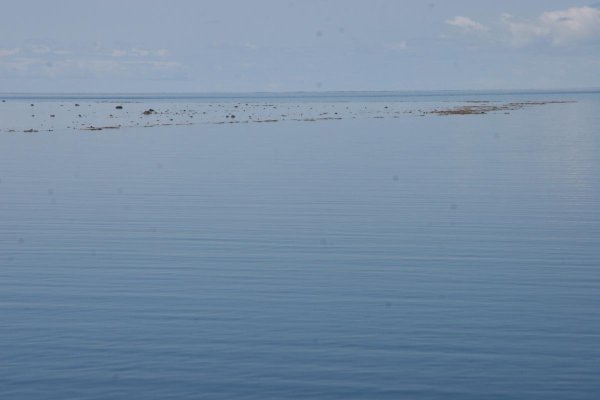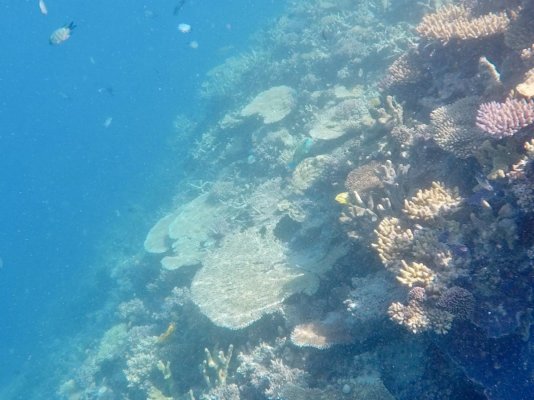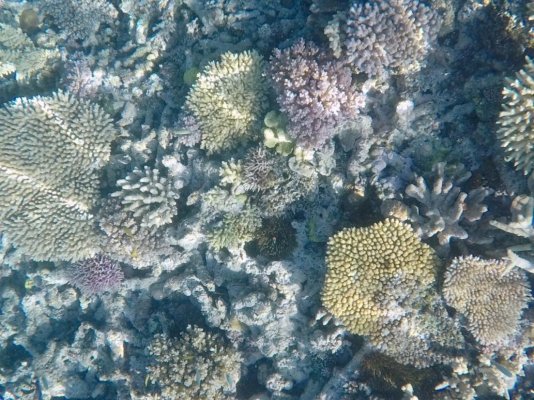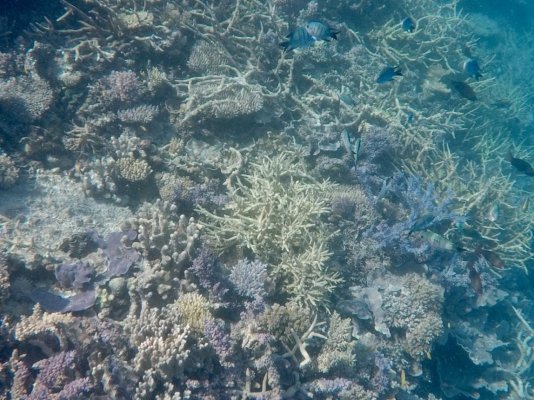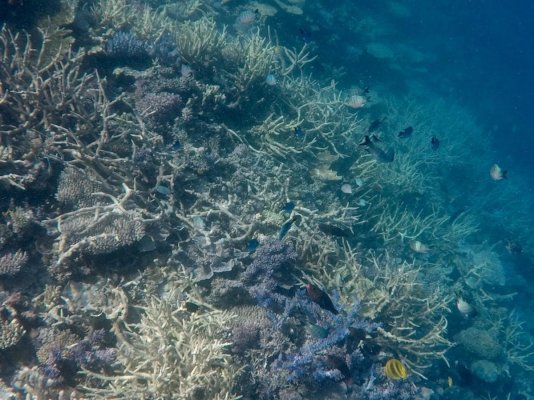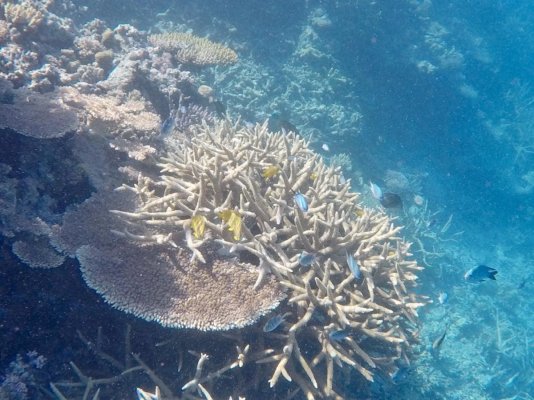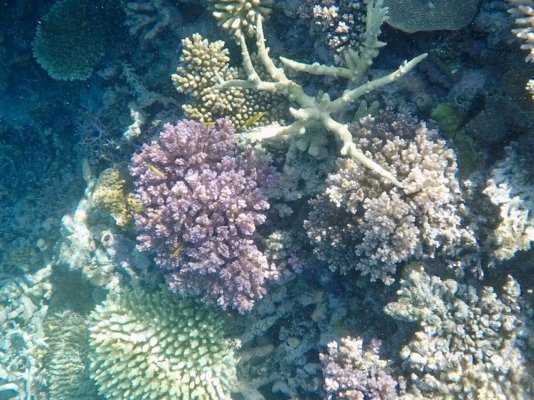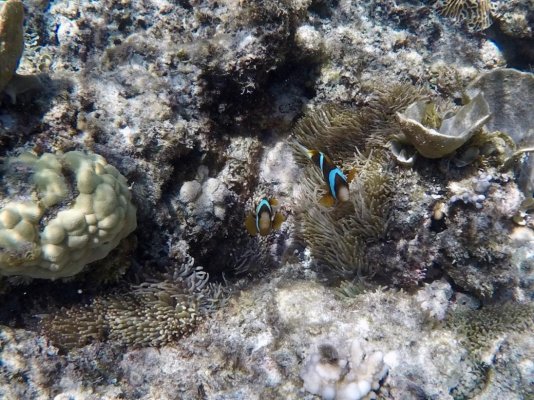Paul
I just got back into internet range this afternoon. After going out to Square Reef (due east of Whitsunday Island) I made the most of the forecast of 5 days of 10-15kn northerlies. In general you want to gain as much southing as you can when the northerlies are present, as bashing into the normal SE winds gets old pretty quickly.
The only issues I had were no phone service and also only intermittent sat TV. My 45 cm KVH really does not work north of Cairns or out on the reef much south of Cairns as the reef starts to become further offshore. If you want TV out there you need a 60cm dish.
Overnights were at Little Stevens Reef, south of Pompey Reef, NE of Storm Reef and finally at Heralds Prong No 2 Reef. Stops along the way for snorkelling.
This section of the Barrier Reef tends to have reef walls on south and west sides (and often on other sides too!), with deep water (well, 30m or so) adjacent. So with northerlies I had to hunt for a bit of protection. For this the satellite images on Google maps (save map for offline use when you have a connection) works very well. The charting is reliable enough, I found, but lacks detail in the southern Barrier Reef area in particular.
As to Guides, Alan Lucas' Cruising the Coral Coast is quite good, but it does not cover much of the reef. He was focussed on the coast, and gunkholing the rivers etc. I cruised many of those areas a couple of years ago, but this time I avoided shallow & murky water as much as possible as I wanted to swim/snorkel. The only other guide I used was the '100 Magic Miles', aka the charter boat bible for the Whitsundays. It is very good. But it does not have much on the reef either.
There is a huge choice of where to visit. What you need is a set of flopper-stoppers (or a SeaKeeper!) as the swell comes over the reef at high tide. This is particularly true for the section I just completed as there was over 5m of tidal range. Earlier in the season, when the SE winds are often 15-20kn it would not be comfortable unless you had neap tides, and perhaps not even then.
You also need enough rode to anchor in 30m depths, although I was not over 20m depth often. And all chain rode is best. You think you have found a flat bottom, but no idea whether is is deep reef or sand. Given there might be a wind shift, you put out good scope. Then you swing in gentle winds and later discover the rode has snagged on a patch of coral rising up 5m or so off the bottom that you did not know was there. That effectively gives a much steeper catenary (but still secure), and can give a lot of noise transmitted up the chain to the bow roller. Anchor recovery is usually quite easy - just go up to where the chain is vertical above the coral patch, take up the slack and the bow moving up and down a bit will shake the chain off the coral. But you would not want to have rope down there for that!

